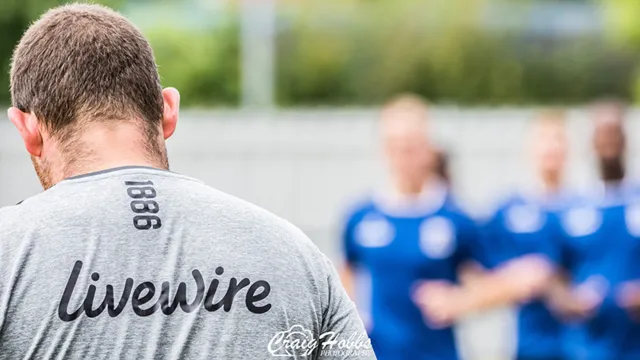Why sensory marketing elevates your content strategy
Ever feel like your brilliant content disappears into the digital void? You're not alone. Did you know that a whopping 80% of consumers forget branded content within only three days? Cutting through the noise and getting your brand to stay in your audience's memory is more challenging than it seems.
But not all is lost; a recent (and fun) trend has been proving that tapping into your audience's five senses could be the key to sticking in their mind. Dive into the world of sensory marketing, the 5D experience that's starting to pop up all over our feeds.
What is sensory marketing
Sensory marketing refers to a strategy that leverages our five senses: touch, taste, smell, sound, and sight. Mixed together to create immersive brand experiences. Its objective is to develop a multisensory marketing approach that influences customer perception by evoking emotions and fostering engagement on a biological level.
By going beyond just what meets the eye and activating other areas of the brain, you can forge deeper and, crucially, longer-lasting connections with your audience. It's about making them feel your brand, not just see it.
How sensory marketing can benefit your content strategy
Build Stronger Emotional Connections
Our five main senses are intimately related to our emotions. Activating them can instantly transport us back to cherished memories, unlock powerful feelings, and stir deep emotions. All key ingredients for creating lasting memories. These memories are the building blocks of trust and confidence.
Tapping into these emotional connections is why brands like Zara, Rolls-Royce and IKEA create such strong customer engagement, leading to repeat purchases and loyal fans.
Increase engagement
Sensory and immersive digital marketing strategies have a knack for grabbing and holding your target audience's attention for longer. Content like ASMR videos and interactive product demos that let you "feel" the features and evoke sensory experiences can be incredibly powerful tools for creating engaging and memorable customer experiences. This translates directly into increased brand awareness.
In 2022, WARC revealed that campaigns incorporating multisensory elements saw a staggering 70% increase in engagement compared to those that only focused on a single sense.
Putting the "human" back in your brand story
Sensory marketing has this incredible ability to add a layer of storytelling that truly brings brands to life. Imagine content that includes slightly imperfect visuals, intimate audio that feels like you're right there, or even just the implied texture of a product.
These elements add another dimension to your campaigns, allowing your potential customers to connect with your content in a more human, relatable, and, dare we say, intimate way.
Eighty-one per cent of consumers say brand trust is built on a human connection, not just performance. Whether it's your email marketing campaigns or your social media marketing strategy, weaving in sensory elements can ground your content in the real world, making your brand feel more approachable, trustworthy and human.
Sensory marketing in action
Still think sensory marketing is fandangled nonsense? Maybe some examples from some of the world’s top brands can help. Our top examples of sensory marketing are:
Apple Inc.
Their most recent iPhone 16 advert is a masterclass in multisensory marketing. The video advert seen on TV, social media, and in-store displays focuses on stunning, high-quality visuals that tell a story about the phone's capabilities in everyday scenarios. But it's the audio that really ties it together. Often starting with a slightly melancholic, slow pace, the music builds to a more upbeat and joyful pitch as the user experiences the benefits of the phone. Their ads are visually satisfying, rich in detail, and use clever lighting to evoke a sense of quality and innovation, leading to impressive engagement.
KFC
KFC’s finger-licking-good campaign is well known for using audio of the satisfying crunch of their fried chicken alongside mouth-watering visuals of their food. This powerful combination instantly evokes the familiar smell and taste of their dishes, creating a strong emotional connection and boosting engagement and memorability.
Techniques like ASMR generate millions of impressions and drive traffic to websites. Having been heavily adopted by many companies such as Ikea, Coca-Cola, KFC, Lush, Audi and more.
How to implement sensory marketing in your content strategy
Engaging sensory marketing does not have to be expensive—just thoughtful, creative execution. Think about how you can translate qualities like calming, energising, or indulgent into your visuals, textures and sounds.
Elevate your visuals and audio by enhancing your campaigns with high-quality, engaging visuals and crystal-clear sounds to add layers to your storytelling. Think about incorporating ambient music to set a mood, using tactile close-ups to emphasise texture, or adding subtle animations to create content with a sense of movement and atmosphere.
Sensory marketing has the ability to be a powerful way to measurably deepen emotional engagement, increase user engagement and conversion rates – and ultimately boost sales. By thoughtfully tapping into the senses, you're not just showing or telling; you're making your audience feel something, and it's those feelings that forge lasting connections and drive conversions.
Sensory marketing strategy for B2B
You might be thinking, "This all sounds great for reaching consumers, but what about B2B? We have you covered. When it comes to B2B sensory marketing, it is about understanding the specific "sensory landscape" of your industry and your clients' needs. Here are a few ideas:
- Visually Engaging Data Presentations, Instead of dry charts and graphs, use interactive data visualisations, subtle animations, and consistent branding to make complex information more digestible and visually appealing.
- Immersive virtual tours of facilities or products for industries with physical products or impressive facilities. Offer virtual tours that allow potential clients to "walk through" your space or zoom in on product details. Incorporate subtle ambient sounds of your work environment or product demonstrations to add another layer of realism.
- High-quality video case studies with authentic audio that showcase client success stories focus on high-quality video with clear audio of the clients speaking. The authenticity of their voice and the visual representation of their experience can build trust and credibility in a way that text alone cannot.
- Interactive product demonstrations provide feedback for software or digital products. Consider interactive demos that allow users to experience the interface firsthand. Explore ways to incorporate subtle haptic feedback (like vibrations on a phone or tablet) to enhance the feeling of interaction.
By thinking creatively about how to engage the senses in a B2B context, you can create more memorable and impactful experiences for your clients, ultimately strengthening relationships and driving business growth.
Ready to awaken your content and connect with your audience? Contact our team today.












